Photo: Avi Naim/Unsplash
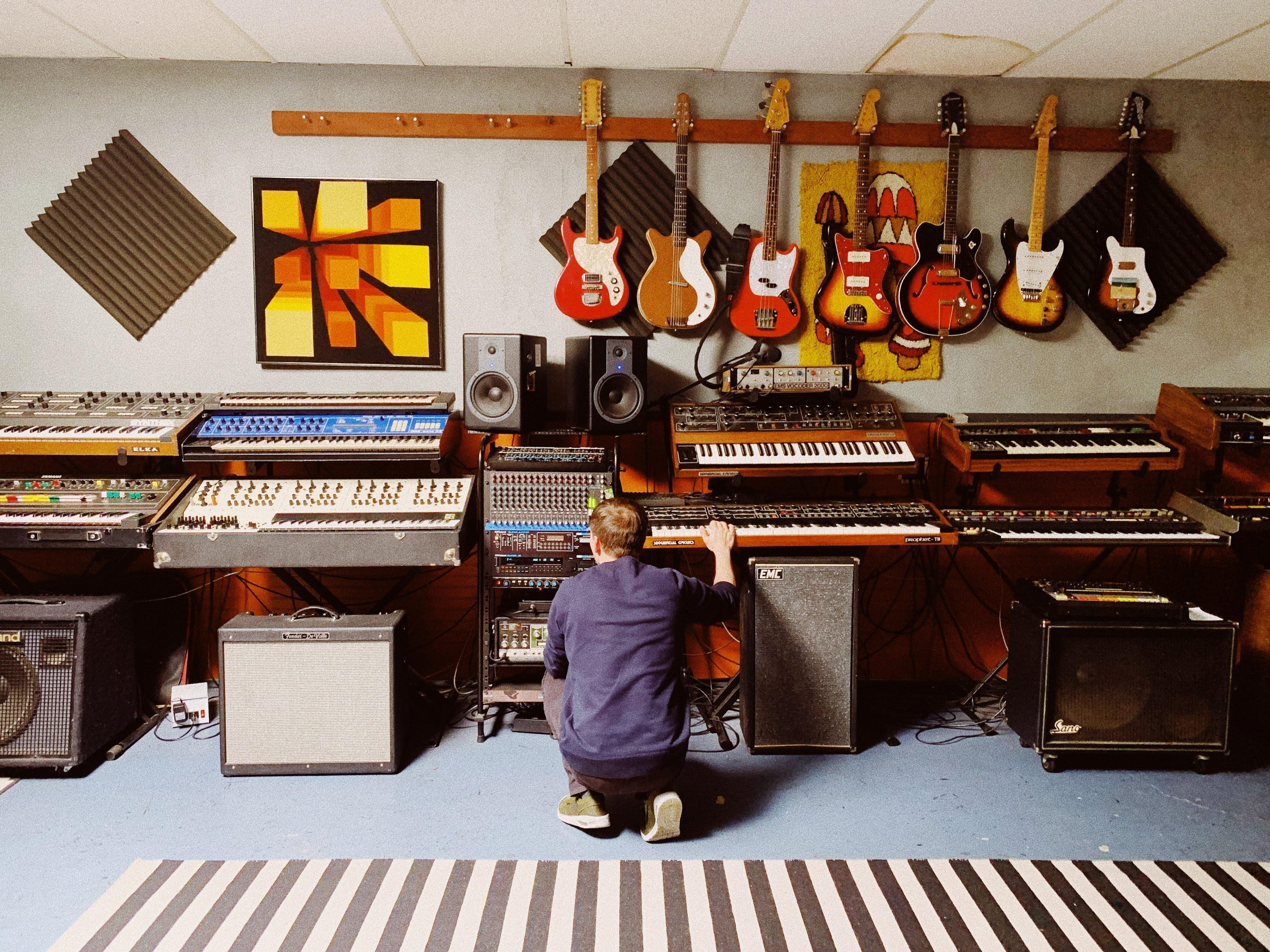
news
Making Music In Quarantine: The Best Online Tools To Learn & Develop Your Sonic Skills
From free Moog and Korg mobile synth apps to fun music education lesson plans from the GRAMMY Museum, this list has got you and your family covered!
With the ongoing quarantine causing everyone to spend a lot more time at home, there's no better time to learn a new instrument or dust off the one you haven't had enough time for. Below, we've rounded up a list of free and low-cost resources for learning music online.
Not long after the GRAMMY Museum in Downtown Los Angeles temporarily shut its doors, they expanded their digital presence by bringing some of their past star-studded programming online, adding new lesson plans for students and more. You can download lesson plans like the music of the Civil Rights movement, producing with MIDI and video production, to use in the at-home classroom with the kiddos—maybe you'll even want to learn along with them. Music fans of all ages will love the digital program series and exhibits. New offerings will be added daily—you can also watch newly online programs (intimate talks and performances held in the Clive Davis Theater) with GRAMMY winners Billie Eilish and FINNEAS, Kool & The Gang, Brandi Carlile, Los Tigres del Norte and more. Check out the full schedule here and visit grammymuseum.org/museum-at-home for more.
If you have a Roland piano/keyboard at home or are thinking about ordering one online to make staying at home a little more fun, the instrument company is offering three free months of digital lessons. Roland's partnership with online piano and guitar learning platform Skoove will get you jamming out in tune in no time. The Berlin-based company offers an iOS app for iPad and iPhone, to make learning at the piano easier.
Fender Play, the guitar giant's online learning platform, launched in 2017, is also offering three months of free online lessons—for guitar, bass and ukulele. According to their website, the content is broken down into "bite-sized lessons" to make learning fun and approachable for all ages and skill levels, featuring songs you'll want to learn and musicians you'll want to learn from. With iOS and Android apps, you can access the courses from your tablet, phone or computer.
Jam Play also offers online guitar and bass lessons, with an extensive catalog of all-level on-demand instructional videos, as well as live courses and master classes from guitar heroes like Brent Mason and Steve Stevens. Their all-access membership costs $20/month or $169/year, with other premium as well as ala carte options available.
For all the drum protegees out there, Queen drummer Roger Taylor has been sharing tons of great tutorials on his Instagram, including fellow percussion heroes like Foo Fighters' Taylor Hawkins. In the IGTV video, shared above, Hawkins demonstrates how to hit a perfect 4/4 beat. Head to Taylor's Instagram for a bunch more drum lessons.
Women's Audio Mission, an Oakland-based music education organization focused on bringing more women into the studio, is continuing their important mission by offering free online classes for women and gender non-conforming individuals. Upcoming livestream classes include "Breaking into the Audio Industry" and "Intro to Synths." They are also offering free access to some other great online learning tools, like their "Sound Essentials" series, which breaks down microphone technique, recording and more.
For the dance music fans that want to master the digital synth, both Moog and Korg are offering limited-time free downloads of their Minimoog Model D and Kaossilator apps. Both offer iOS apps for both iPad and iPhone that are, at the time of this writing, free to download, while Korg also has an Android app that costs $20.
DJ Mag recently rounded up a great list of some their favorite free digital studio tools, including the aforementioned apps, as well as some great plugins for anyone wanting to make dope beats on their computer. For synths, they also recommend DEXED, a digital plugin version of the classic '80s Yamaha DX7 synth (as heard on Tina Turner's "What's Love Got To Do With It" and Whitney Houston's "Saving All My Love For You"). They also highlighted the power of Apple Garageband, which has been boosted in recent years with some of the functionality of the not-free Logic Pro and, if you have a Mac, is already on your computer. In addition to a couple of free multi-faceted plugins (loops, samples and more), they also recommend two powerful browser-based tools—Audiotool and BandLab.
For those who really just love learning, and want to learn music skills and beyond from some of the most beloved names of our time, Masterclass is a great resource. They are currently offering a two-for-one deal on their annual passes, meaning you and a friend or family member can both sign up for $180 total for unlimited access to courses. Masterclasses taught by musicians currently include Christina Aguilera teaching singing, Timbaland teaching producing and beatmaking, Carlos Santana slaying guitar, deadmau5 diving into electronic music production, Usher showcasing the art of performance, Herbie Hancock teaching jazz and more.
For the music student craving tailored lessons, Live Lesson Masters can connect you to musicians (stuck at home just like you!) who are ready to teach you one-on-one over video calls. They currently offer a ton of categories, like vocal coaching, piano lessons, production, guitars, drums, horns, DJing as well as cooking and yoga classes, with more to be added soon. The website explains lessons will be tailored to the student's level, with all ages welcome. Prices range depending on the "lesson master" a.k.a. teacher, but average about $100/hour. For those who can afford it, the money supports the currently-unable-to-tour-musicians, with a portion of proceeds also going to charities supporting touring artists and crew.
11 Meditation Apps To Help You Get Calm & Centered During Quarantine & Beyond
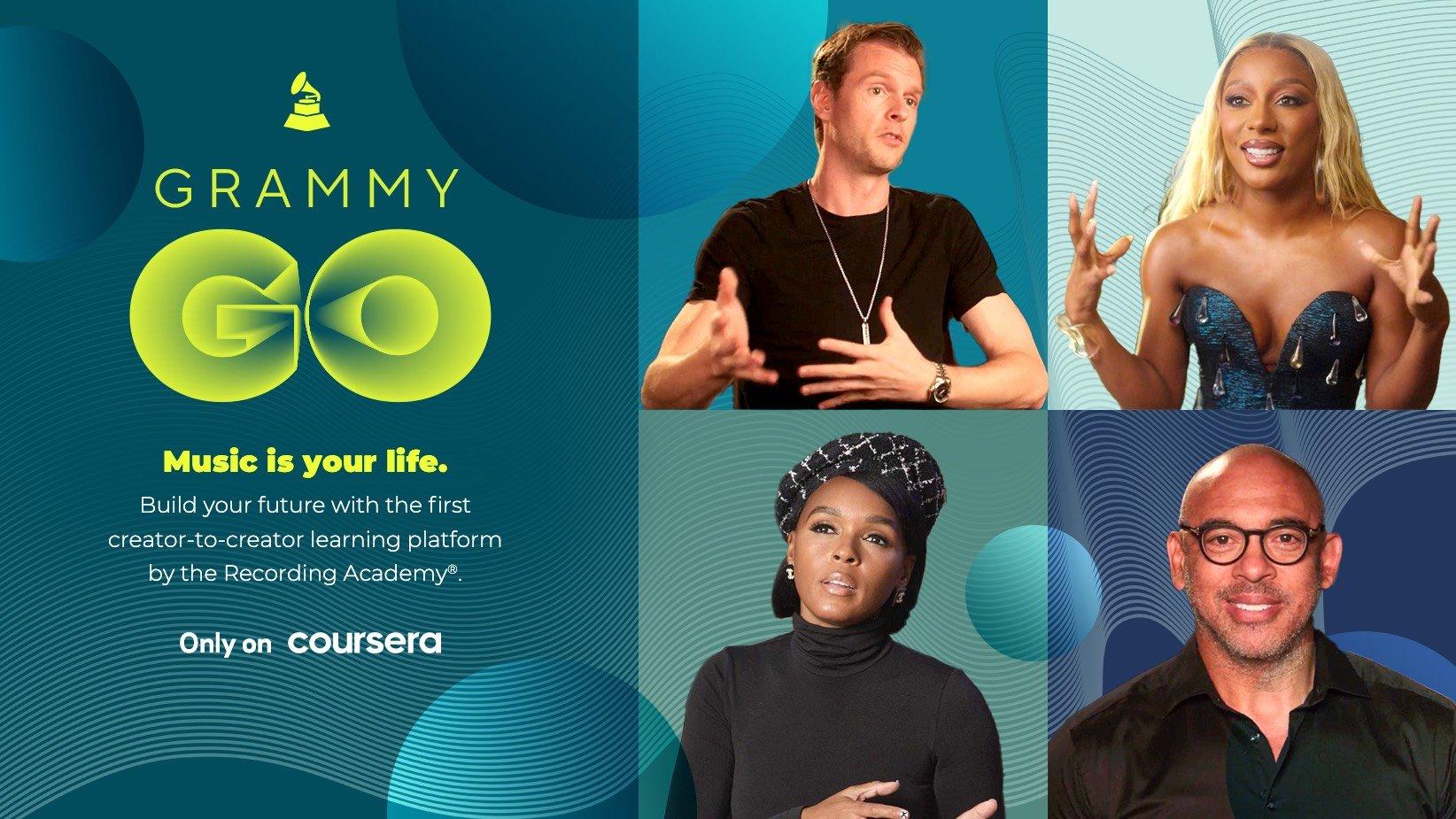
Graphic & Photos Courtesy of GRAMMY GO
news
Recording Academy & Coursera Partner To Launch GRAMMY GO Online Learning Initiative
Class is in session. As part of the Recording Academy's ongoing mission to empower music's next generation, GRAMMY Go offers digital content in specializations geared to help music industry professionals grow at every stage of their career.
The Recording Academy has partnered with leading online learning platform Coursera on GRAMMY GO, a new online initiative to offer classes tailored for music creators and industry professionals.
This partnership empowers the next generation of the music community with practical, up-to-the moment digital content that provides wisdom for both emerging and established members of the industry. Continuing the Academy’s ongoing mission to serve all music people, courses cover a variety of specializations tailored to creative and professional growth.
GRAMMY GO on Coursera includes courses taught by Recording Academy members, featuring GRAMMY winners and nominees and offers real-life lessons learners can put to work right away.
Starting today, enrollment is open for GRAMMY GO’s first Coursera specialization, "Building Your Audience for Music Professionals," taught by Joey Harris, international music/marketing executive and CEO of Joey Harris Inc. The course features Rock & Roll Hall of Fame inductee and five-time GRAMMY winner Jimmy Jam, 10-time GRAMMY nominee Janelle Monáe and three-time GRAMMY winner and the 2024 GRAMMYs Best New Artist Victoria Monét. This foundational specialization will help participants gain the skills, knowledge and confidence to build a strong brand presence and cultivate a devoted audience within the ever-changing music industry.
The partnership’s second course, launching later this summer, aims to strengthen the technological and audio skills of a music producer. "Music Production: Crafting An Award-Worthy Song" will be taught by Carolyn Malachi, Howard University professor and GRAMMY nominee, and will include appearances by GRAMMY winner CIRKUT, three-time GRAMMY winner Hit-Boy, artist and celebrity vocal coach Stevie Mackey, five-time GRAMMY nominee and Recording Academy CEO Harvey Mason jr., and 15-time GRAMMY winner Judith Sherman. Pre-enrollment for "Music Production: Crafting An Award-Worthy Song" opens today.
"Whether it be through a GRAMMY Museum program, GRAMMY Camp or GRAMMY U, the GRAMMY organization is committed to helping music creators flourish, and the Recording Academy is proud to introduce our newest learning platform, GRAMMY GO, in partnership with Coursera," said Panos A. Panay, President of the Recording Academy. "A creator’s growth path is ongoing and these courses have been crafted to provide learners with the essential tools to grow in their professional and creative journeys."
"We are honored to welcome GRAMMY GO, our first entertainment partner, to the Coursera community," said Marni Baker Stein, Chief Content Officer at Coursera. "With these self-paced online specializations, aspiring music professionals all over the world have an incredible opportunity to learn directly from iconic artists and industry experts. Together with GRAMMY GO, we can empower tomorrow's pioneers of the music industry to explore their passion today."
GRAMMY GO also serves as the music community’s newest digital hub for career pathways and editorial content that provides industry insights for members of the industry; visit go.grammy.com for more. For information and enrollment, please visit the landing pages for "Building Your Audience for Music Professionals" and "Music Production: Crafting An Award-Worthy Song."
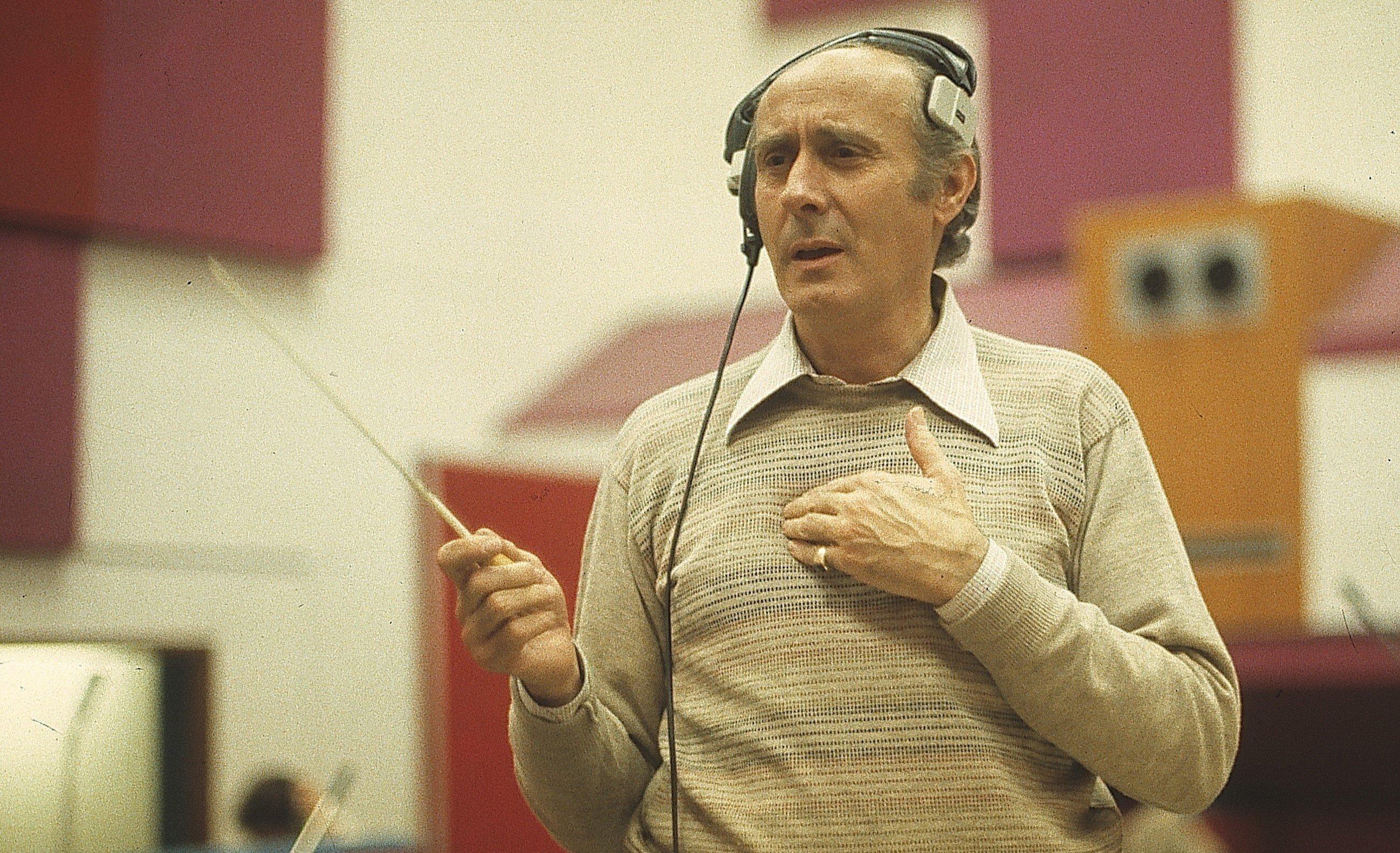
Photo: A. Schorr/ullstein bild via Getty Images
list
10 Essential Henry Mancini Recordings: From "Moon River" To The 'Pink Panther' Theme
Composer, arranger, conductor and pianist Henry Mancini won 20 GRAMMY Awards over his legendary career. On what would be his 100th birthday, revisit 10 timeless Henry Mancini compositions.
Henry Mancini had a gift for melodies of an ethereal, almost supernatural beauty.
His prolific discography — albums of jazzy orchestral pop, dozens of film and television soundtracks — established him as a cultural icon and transformed the role that melody and song played in the art of movie narrative. Once you encounter a Henry Mancini tune, it’s almost impossible not to start humming it.
A composer, arranger, conductor and pianist of tireless discipline, Mancini won a staggering 20 GRAMMY Awards and was nominated 72 times. All of his wins — including the first-ever golden gramophone for Album Of The Year at the inaugural 1959 GRAMMYs — will be on display at the GRAMMY Museum to honor his centennial birthday, April 16.
To mark what would be his centennial birthday, Mancini's children will travel to Abruzzo, Italy — where Mancini’s parents migrated from. And on June 23, the Hollywood Bowl Orchestra will present a program of his music with a gallery of guest stars including singer Monica Mancini, the maestro’s daughter. Out June 21, The Henry Mancini 100th Sessions – Henry Has Company will feature a new recording of "Peter Gunn" conducted by Quincy Jones and featuring John Williams, Herbie Hancock and Arturo Sandoval.
Although Mancini died in 1994 at age 70, his compositions remain timeless and ever-relevant. Read on for 10 essential Henry Mancini compositions to cherish and rediscover.
"Peter Gunn" (1958)
In 1958, Mancini was looking for work and used his old Universal studio pass to enter the lot and visit the barber shop. It was outside the store that he met writer/director Blake Edwards and got the chance to write the music for a new television show about private detective Peter Gunn.
Seeped in West Coast Jazz, Mancini’s main theme sounds brash and exciting to this day – its propulsive beat and wailing brass section evoking an aura of cool suspense. The "Peter Gunn" assignment cemented his reputation as a cutting-edge composer, and the accompanying album (The Music From Peter Gunn) won GRAMMYs in the Album Of The Year and Best Arrangement categories.
"Mr. Lucky" (1959)
Half of the "Peter Gunn" fan mail was addressed to Mancini. As a result, CBS offered Blake Edwards a second television show, as long as the composer was part of the package. Edwards created "Mr. Lucky," a stylish series about the owner of a floating casino off the California coast.
1959 was an exhausting year for Mancini, as he was scoring two shows at the same time on a weekly basis. Still, his music flowed with elegance and ease. The "Mr. Lucky" ambiance allowed him to explore Latin rhythms, and the strings on his wonderful main theme shimmer with a hint of yearning. It won GRAMMY Awards in 1960 for Best Arrangement and Best Performance by an Orchestra.
"Lujon" (1961)
As part of his contract with RCA Victor, Mancini was committed to recording a number of albums featuring original compositions in the same velvety jazz-pop idiom from his television work. "Lujon" is the standout track from Mr. Lucky Goes Latin, a collection of Latin-themed miniatures that luxuriate in a mood of plush languor.
Inspired by the complex harmonics of French composer Maurice Ravel, "Lujon" steers safely away from lounge exotica thanks to the refined qualities of the melody and arrangement.
"Moon River" (1961)
Performed on a harmonica, the main melody of "Moon River" is nostalgic to the bone, but also life affirming. A majestic string section makes the music swoon, like gliding on air. And the harmonies in the vocal chorus add gravitas — a touch of humanity.
It took Mancini half an hour to write "Moon River," but the Breakfast at Tiffany’s anthem made him a global superstar. Among the many artists who covered the song, pop crooner Andy Williams turned it into his personal anthem. Mancini won an Academy Award for Best Original Song, and GRAMMY Awards for Record Of The Year, Song Record Of The Year and Best Arrangement. The album soundtrack earned two additional gramophones.
Theme from Hatari! (1962)
After two failed attempts with different composers, legendary director Howard Hawks invited Mancini to write the score for Hatari! — the wildly episodic but oddly endearing safari film he had shot in Tanganyika with John Wayne. Mancini jumped at the opportunity, and Hawks gave him a few boxes from the trip that contained African percussive instruments, a thumb piano and a tape of Masai tribal chants. Two chords from that chant, together with a slightly detuned upright piano formed the basis for the movie’s main theme.
Mancini’s sparse arrangement and melancholy melody conspired to create one of the most gorgeous themes in the history of film.
"Days of Wine and Roses" (1962)
Throughout the decades, Mancini provided musical accompaniment to Blake Edwards’ filmography, which switched from slapstick comedy to stark melodrama. There is a perverse beauty to the theme of Days of Wine and Roses — a movie about a couple of lifelong alcoholics — as the lush choral arrangement seems to glorify the innocence of better times.
It won an Academy Award for Best Original Song — Mancini’s second Oscar in a row — and three GRAMMYs: Record Of The Year, Song Of The Year and Best Background Arrangement.
"The Pink Panther Theme" (1963)
Directed by Edwards and starring Peter Sellers as part of an ensemble cast, the original Pink Panther was a frothy caper comedy that had none of the manic touches of comedic genius that Sellers would exhibit in subsequent entries of the franchise. It was Mancini’s ineffable main theme that carried the movie through.
Jazzy and mischievous, Mancini wrote the melody with the light-as-a-feather playing of tenor saxophonist Plas Johnson in mind. It won GRAMMYs in three categories: Best Instrumental Arrangement, Best Instrumental Compositions (Other Than Jazz), and Best Instrumental Performance – Non-Jazz.
Charade (1963)
Mancini’s gift for cosmopolitan tunes and jazzy arrangements found the perfect vehicle in the score for Stanley Donen’s Charade — a droll Hitchcockian thriller shot in Paris and starring Cary Grant and Audrey Hepburn.
The main theme is a waltz in A minor, and opens with pulsating percussion. When the central melody appears, it evokes a melancholy reflection and a certain thirst for the kind of globetrotting adventure that the film delivers in spades. It was Johnny Mercer’s favorite Mancini melody, and he wrote exquisite lyrics for it.
The best version probably belongs to jazz singer Johnny Hartman, who released it as the opening track of his 1964 album I Just Dropped By To Say Hello.
Two For The Road (1967)
Friends and family remember Mancini as a humble craftsman who ignored the trappings of fame and focused on the discipline of work. In 1967, after Audrey Hepburn cabled to ask him about writing the music for the Stanley Donen film Two For The Road, Mancini agreed, but was taken aback when the director rejected his initial theme. Leaving his ego aside, he returned to the drawing board and delivered a lovely new melody – and a spiraling piano pattern seeped in old fashioned tenderness.
"Theme from The Molly Maguires" (1970)
Even though Mancini enjoyed most accolades during the ‘60s, his protean level of inspiration never wavered. In 1970, he was brought in to rescue the soundtrack of Martin Ritt’s gritty secret societies drama The Molly Maguires, about Irish-American miners rebelling against their mistreatment in 19th century Pennsylvania.
The main theme makes time stand still: a sparse arrangement that begins with a solitary harp, until a recorder ushers in a haunting, Irish-inspired melody. The score reflected a more restrained Mancini, but was still intensely emotional.
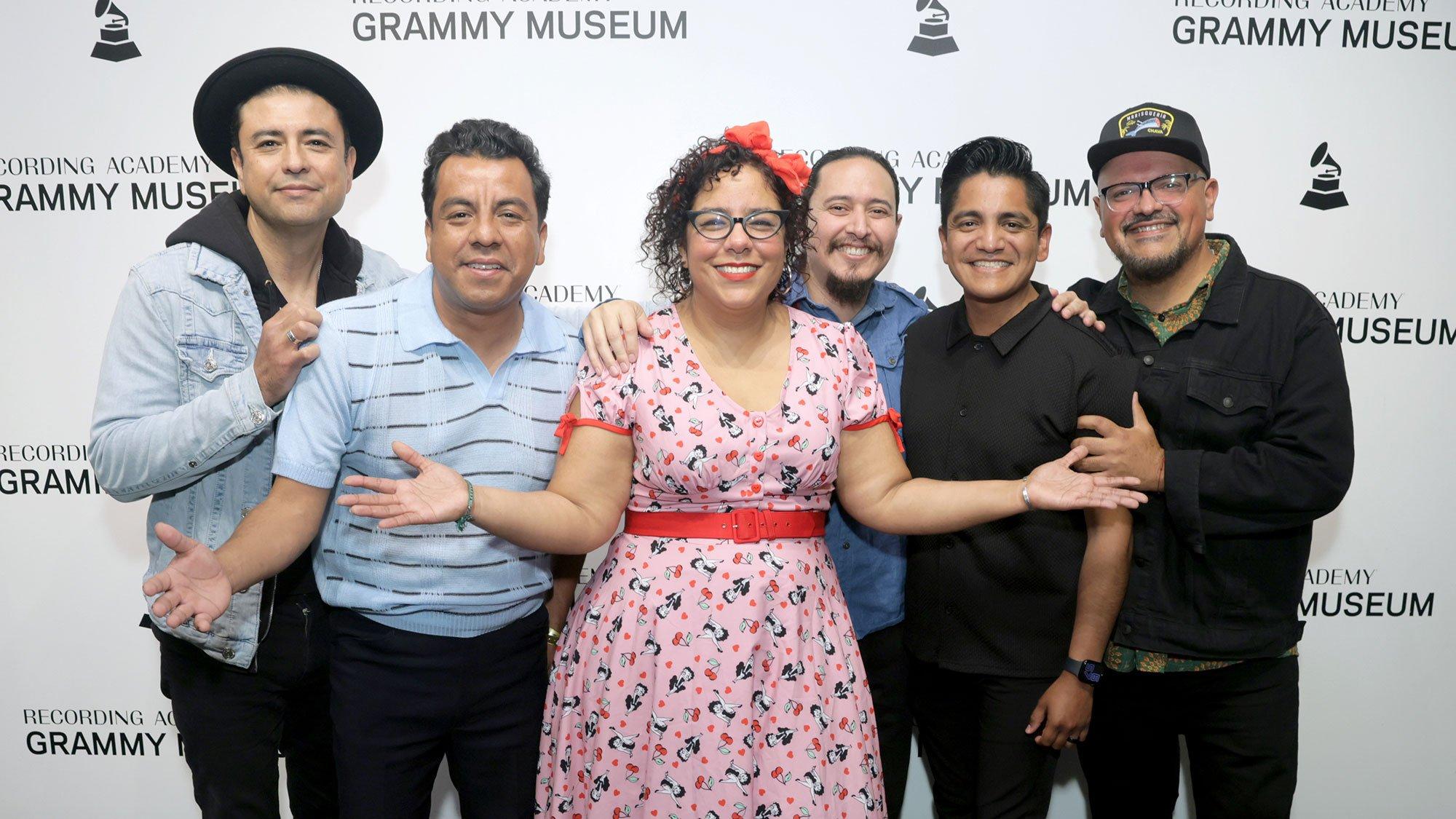
Photo: Rebecca Sapp/Getty Images for The Recording Academy
news
La Santa Cecilia Celebrates Their 'Alma Bohemia' With Documentary Screening & Performance At The GRAMMY Museum
In a documentary screening detailing the making of their album 'Cuatro Copas' followed by a discussion and live performance at the GRAMMY Museum, La Santa Cecilia recounts years of making music and friendship.
"Oh no, I’m going to start crying again," says La Santa Cecilia singer La Marisoul during a touching scene in Alma Bohemia, the documentary directed by Carlos Pérez honoring the Los Angeles band’s 15 year anniversary.
As it turns out, there are many reasons to be emotional about this film — and the very existence of La Santa Cecilia in the contemporary Latin music landscape. Fittingly, Alma Bohemia was received enthusiastically by the capacity audience during an exclusive screening on April 3 at the GRAMMY Museum’s Clive Davis Theater in Los Angeles.
Formed by La Marisoul (real name is Marisol Hernández), bassist Alex Bendaña, accordionist and requinto player José "Pepe" Carlos and percussionist Miguel "Oso" Ramírez, La Santa Cecilia was for years one of the best kept secrets in the Los Angeles music scene. As close friends and musicians, they won over audiences with an organic, down-to-earth sound and a lovely songbook that draws from traditional formats such as bolero, ranchera and nueva canción.
Alma Bohemia follows the making of La Santa’s 2023 album, Cuatro Copas Bohemia en la Finca Altozano. A celebration of the band’s longevity, the session also functions as a subtle, yet powerful musical experiment. It was recorded at the Finca Altozano in Baja California, where the band members stayed as guests of celebrated chef Javier Plascencia — a longtime fan.
Argentine producer Sebastián Krys — the band’s longtime collaborator — calls this his Alan Lomax experiment. The album was recorded live on tape with a variety of strategically placed microphones capturing hints of ambient sonics — a sweet afternoon breeze, the clinking of glasses, the musicians’ banter, the soft sounds that accompany stillness.
From the very beginning, the making of Cuatro Copas mirrors the band’s bohemian cosmovision: A communal approach where the quartet — together with carefully selected guest stars — get together to share the magic of creation, the unity of like-minded souls, homemade food, and more than a couple of drinks. In effect, the bottles of mezcal and never ending rounds of toasting quickly become a running joke throughout the documentary.
La Marisoul’s fragile lament is enveloped in spiraling lines of mournful electric guitars with soulful understatement on the track "Almohada." Guest artists liven things up, with Oaxacan sister duo Dueto Dos Rosas adding urgency to "Pescadores de Ensenada," while son jarocho master Patricio Hidalgo ventures into a lilting (yet hopeful) "Yo Vengo A Ofrecer Mi Corazón," the ‘90s Argentine rock anthem by Fito Páez.
Visibly delighted to be part of the bohemia, 60-year-old ranchera diva Aida Cuevas steals the show with her rousing rendition of "Cuatro Copas," the José Alfredo Jiménez classic. "Viva México!" she exclaims as the entire group sits around a bonfire at night, forging the past and future of Mexican American music into one.
Read more: La Santa Cecilia Perform "Someday, Someday New"
Following the screening, the band sat down for a Q&A session hosted by journalist Betto Arcos. Sitting on the first row, a visibly moved young woman from El Salvador thanked the band for helping her to cope with the complex web of feelings entailed in migrating from Latin America. La Santa’s songs, she said, reminded her of the loving abuelita who stayed behind.
"We love the old boleros and rancheras," said La Marisoul. "We became musicians by playing many of those songs in small clubs and quinceañeras. It’s a repertoire that we love, and I don’t think that will ever change."
Carlos touched on his experience being a member of Santa Cecilia for about seven years before he was able to secure legal status in the U.S. When the band started to get concert bookings in Texas, they would take long detours on their drives to avoid the possibility of being stopped by the authorities. Carlos thanked his wife Ana for the emotional support she provided during those difficult years.
Ramírez took the opportunity to acknowledge producer Krys for being an early champion of the band. "He had a vision, and he made us better," he said, flashing forward to a recent edition of the Vive Latino festival. "There were about 12,000 people to see us," he said. "And they were singing along to our tunes."
"The band is just an excuse to hang out with your friends," added La Marisoul just before La Santa performed two live songs. Her voice sounded luminous and defiant in the theater’s intimate space, always the protagonist in the group’s delicately layered arrangements.
"The first time I got to see the finished documentary, I felt proud of all the work we’ve done together," said producer Krys from his Los Angeles studio the day after the screening. "On the other hand, there’s a lot of work ahead of us. I believe La Santa Cecilia deserves wider exposure. They should be up there among the greatest artists in Latin music."
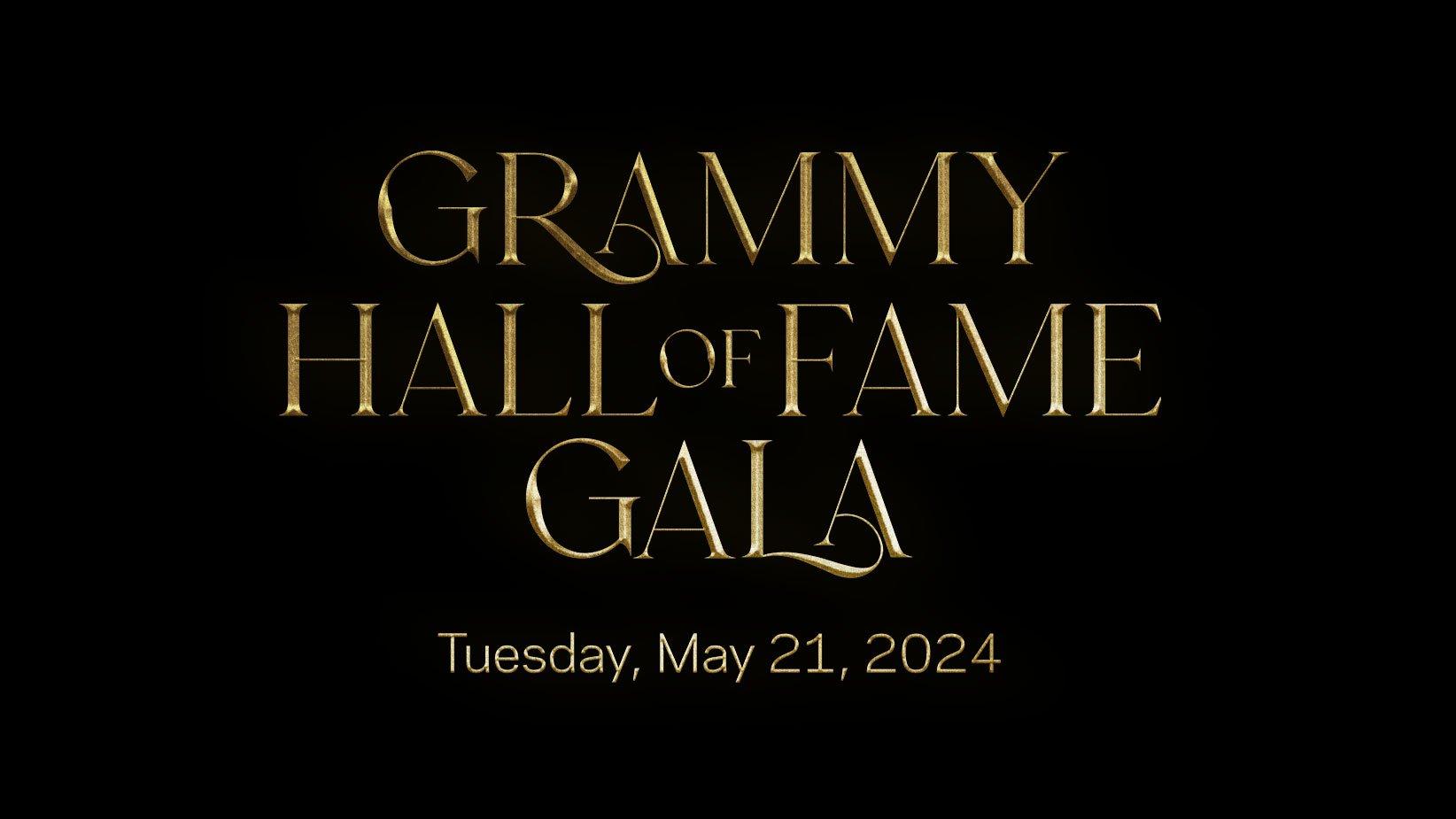
Image courtesy of the GRAMMY Museum
news
The GRAMMY Hall Of Fame Returns To Celebrate 50th Anniversary: Inaugural Gala & Concert Taking Place May 21 In Los Angeles
Following a two-year hiatus, the GRAMMY Hall Of Fame returns to celebrate its 50th anniversary with an inaugural gala and concert on Tuesday, May 21, at the NOVO Theater in Los Angeles. Ten recordings will be newly inducted into the Hall this year.
Following a two-year hiatus, the GRAMMY Museum and Recording Academy are reinstating the GRAMMY Hall Of Fame on its 50th anniversary. The momentous event will be celebrated with an inaugural gala and concert on Tuesday, May 21, at the NOVO Theater in Los Angeles; tickets and performers for the event will be announced at a later date. As part of the return, 10 recordings, including four albums and six singles, will be newly inducted into the GRAMMY Hall Of Fame later this year.
The GRAMMY Hall Of Fame was established by the Recording Academy's National Trustees in 1973 to honor recordings of lasting qualitative or historical significance that are at least 25 years old. Inductees are selected annually by a special member committee of eminent and knowledgeable professionals from all branches of the recording arts with final ratification by the Recording Academy's National Board of Trustees. There are currently 1,152 inducted recordings in the GRAMMY Hall Of Fame. View the full list GRAMMY Hall Of Fame past inductees.
This year, the GRAMMY Museum’s GRAMMY Hall Of Fame Gala will be the first of what will become an annual event, and includes a red carpet and VIP reception on the newly opened Ray Charles Terrace at the GRAMMY Museum, followed by a one-of-a-kind concert at the NOVO Theater in Downtown Los Angeles.
The inaugural gala and concert is produced by longtime executive producer of the GRAMMY Awards, Ken Ehrlich, along with Chantel Sausedo and Ron Basile and will feature musical direction by globally renowned producer and keyboardist Greg Phillinganes. For sponsorship opportunities, reach out to halloffame@grammymuseum.org.
Keep watching this space for more exciting news about the GRAMMY Hall Of Fame!
